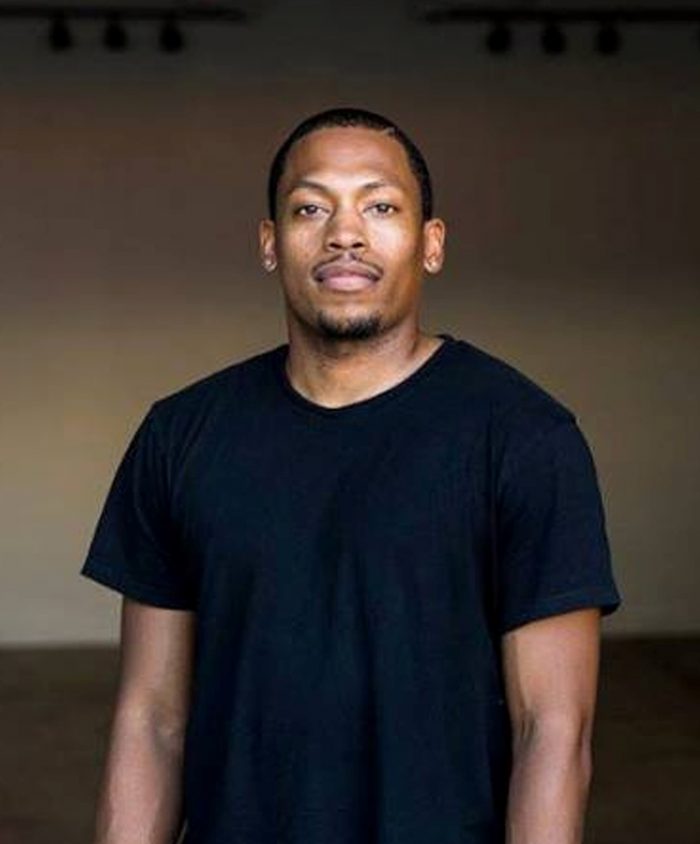Germane Barnes Explores How Architecture Shapes Cultural Experience
Alumnus Germane Barnes received a Master of Architecture from Woodbury in 2012 and was awarded the Thesis Prize for his project Symbiotic Territories. Barnes’ research and design practice investigates the connection between architecture and identity, examining architecture’s social and political agency through historical research and design speculation. Learning from historical data and perspectives from within architecture as well as cultural and ethnic studies, he examines how the built environment influences the social and cultural experience. Currently he is the designer in residence for the Opa Locka Community Development Corporation and a lecturer in the School of Architecture at the University of Miami. We caught up with Germane to ask him about his experience at Woodbury and how it has impacted his career.
Interview with Germane Barnes

What do you consider to be your greatest accomplishments both personally and professionally?
My greatest accomplishment personally was to receive my Master of Architecture degree. It was a very tumultuous road as the first time I applied I was rejected from every school I applied. Woodbury took a gamble on me and my professional career has skyrocketed. Most recently I was featured on an architecture panel with Sir David Adjaye during Art Basel Miami, whom I actually met for the first time while in graduate school at Woodbury.
What advice would you give to younger alumni or current students who aspire to follow a similar career path?
I would tell a young student to latch on to their professor, or any professor who they find a connection with and absorb as much information as possible. Ultimately those connections will be the spring board to your career. I was fortunate enough to take studio courses with influential practitioners and it has been the key to my success.
What would you say to a prospective student who is considering Woodbury University?
I would say that Woodbury is a very challenging institution but very comforting and family oriented. The professors are top notch and the facilities are as well. The onus is on you to push yourself beyond your limits.
What is your lasting impression of studying architecture at Woodbury?
Studying architecture at Woodbury changed my life. The undergraduate architectural education I received was a strong foundation but extremely limiting in the scope of the architect. Woodbury’s approach broaden my view of what architecture can do and who it can impact beyond simply designing structures. The rigor that is required at Woodbury definitely prepared me for my current work.
What do you like best about your current position?
Currently I’m a full-time professor of architecture at the University of Miami while continuing to practice architecture and community development. I love the fact that the thesis I started at Woodbury became my real world practice which is rare. I was able to blend architecture, social practice and urban planning into something that has taken me around the country speaking on topics such as creative place making and gentrification.
What projects have you worked on that you’re most proud of?
There are two projects that I am most proud of. One was completed during the time I was employed at Air Architecture in Los Angeles under Francois Perrin. That was the Architectones project that blended art and architecture in a way I had never seen before. I spent the entire summer at the historical Neutra VDL Residence creating site specific installations with renown artist Xavier Veilhan. That project was my introduction in the art world where a lot of my current work is featured. The other project that I am proudest of is the Made In Opa-locka project that began as the brainchild of Jennifer Bonner & Christian Stayner, my former professors at Woodbury. That project was the catalyst to further community development projects across South Florida.
What have been the biggest challenges in your career? Did your experiences at Woodbury help you to overcome any obstacles?
The biggest challenges of my career has been meeting the intensity required to continue to move forward in the field of architecture. No amount of academia can prepare you for the level of work that is required to excel at a high level. Woodbury did however give me the tools and proper training which allows me to meet the career goals that I have.
Describe Woodbury University in 3 words.
The students of Woodbury introduced me to a method of working that I had not experienced before. I was truly stunned by the amount of effort that was given on a daily basis and the level of competition that was fostered in the studios. And while this was occurring, diversity was all around me. I was submerged in an environment of multiple forms architectural representation and types of people. From the students to the faculty. It was representative of the different economic levels and ethnic origins which I savored. This commitment to diversity in essence truly made the school feel like a family. The small classes sizes provided ample attention from a wonderfully prepared faculty. During my time at the university I had the pleasure of being taught by Norman Millar and Nick Roberts, both influential professors and mentors in my architectural education.
Cover photo by Matthew Roy